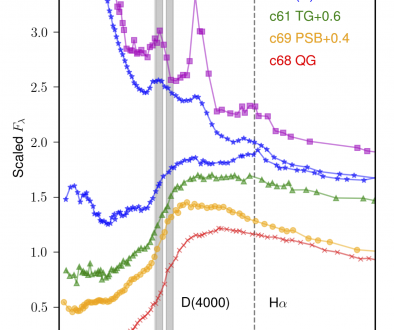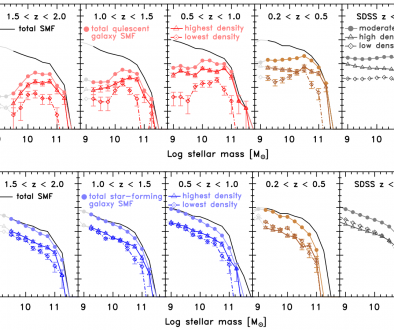Kawinwanichakij 2017 Summary
In the low redshift Universe (z ~ 0.1), it has been shown that the respective relationships between stellar mass and environment on quenching are largely separable, implying there are two distinct quenching processes at work: one that correlates with stellar mass (independent of environment) and one that correlates with galaxy environment (independent of stellar mass). With ZFOURGE we quantify the environmental quenching efficiency, and show that at z > 0.5 it depends on galaxy stellar mass, demonstrating that the effects of quenching related to (stellar) mass and environment are not separable. In high-density environments, the mass and environmental quenching efficiencies are comparable for massive galaxies (log(M/M⊙) > 10.5) at all redshifts. For lower mass galaxies (log(M/M⊙) ~ 9-10), the environmental quenching efficiency is very low at z > 1.5, but increases rapidly with decreasing redshift. Environmental quenching can account for nearly all quiescent lower mass galaxies (log(M/M⊙ ) ~ 9–10), which appear primarily at z < 1.0.
The morphologies of lower mass quiescent galaxies are inconsistent with those expected of recently quenched star-forming galaxies. Some environmental process must transform the morphologies on similar timescales as the environmental quenching itself. The evolution of the environmental quenching favors models that combine gas starvation (as galaxies become satellites) with gas exhaustion through star-formation and outflows (“overconsumption”), and additional processes such as galaxy interactions, tidal stripping, and disk fading to account for the morphological differences between the quiescent and star-forming galaxy populations.
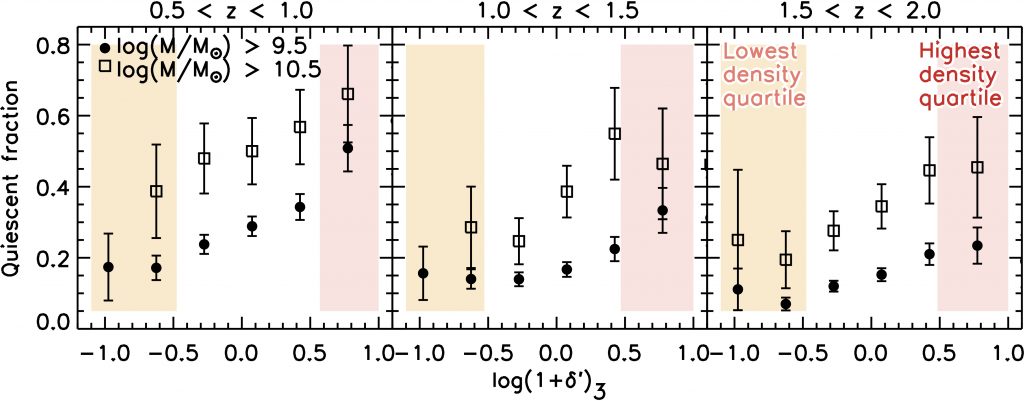
Figure. Quiescent fraction versus overdensity in three different redshift ranges for two mass-selected samples. The quiescent fractions of galaxies are determined in bins of 0.4 dex of log(1 + δ). The error bars indicate 1σ uncertainties based on Poisson statistics. The shaded regions in each panel indicate the lower and upper 25th percentiles of log(1 + δ), where we define low- and high-density environments. At all redshift ranges, we see evidence for a higher quiescent fraction of galaxies at higher densities. This effect is very strong at z < 1, but decreases at higher redshift, z > 1.
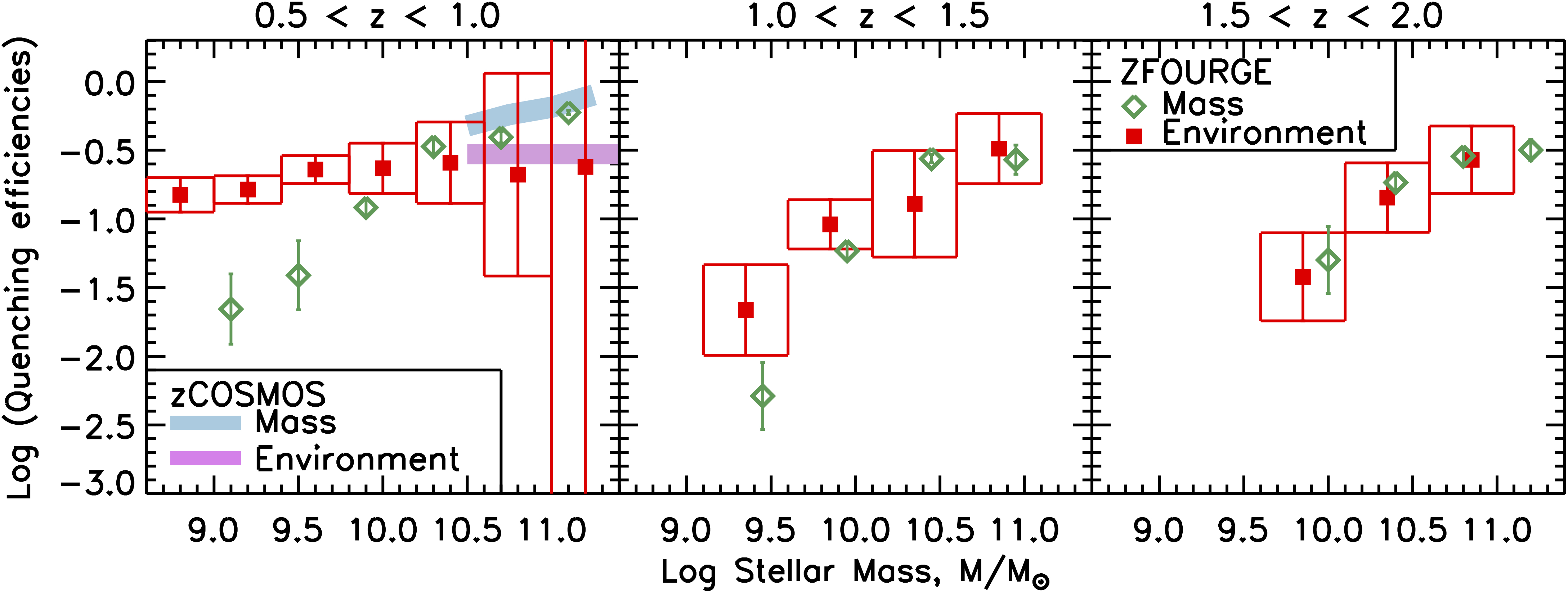
Figure. The comparison between the environmental quenching efficiency (red squares) and (stellar) mass quenching efficiency (green diamond) as a function of stellar mass for galaxies in three redshift ranges. The environmental quenching efficiencies shown here correspond to the highest overdensity quartiles. The box widths show the stellar mass binning, and the box heights (and error bars) indicate 1σ Poisson uncertainties. The purple and light blue rectangles show the environmental and (stellar) mass quenching efficiencies, respectively, measured in zCOSMOS at 0.3 < z < 0.6 (Peng et al. 2010). The environmental quenching efficiency evolves with both cosmic time and galaxy stellar mass. At z < 1, the environmental quenching is largely independent of the galaxy stellar mass. At z > 1, more massive galaxies experience stronger environmental quenching, indicating that the effects of stellar mass and environment on galaxy quenching are not separable at high redshift.
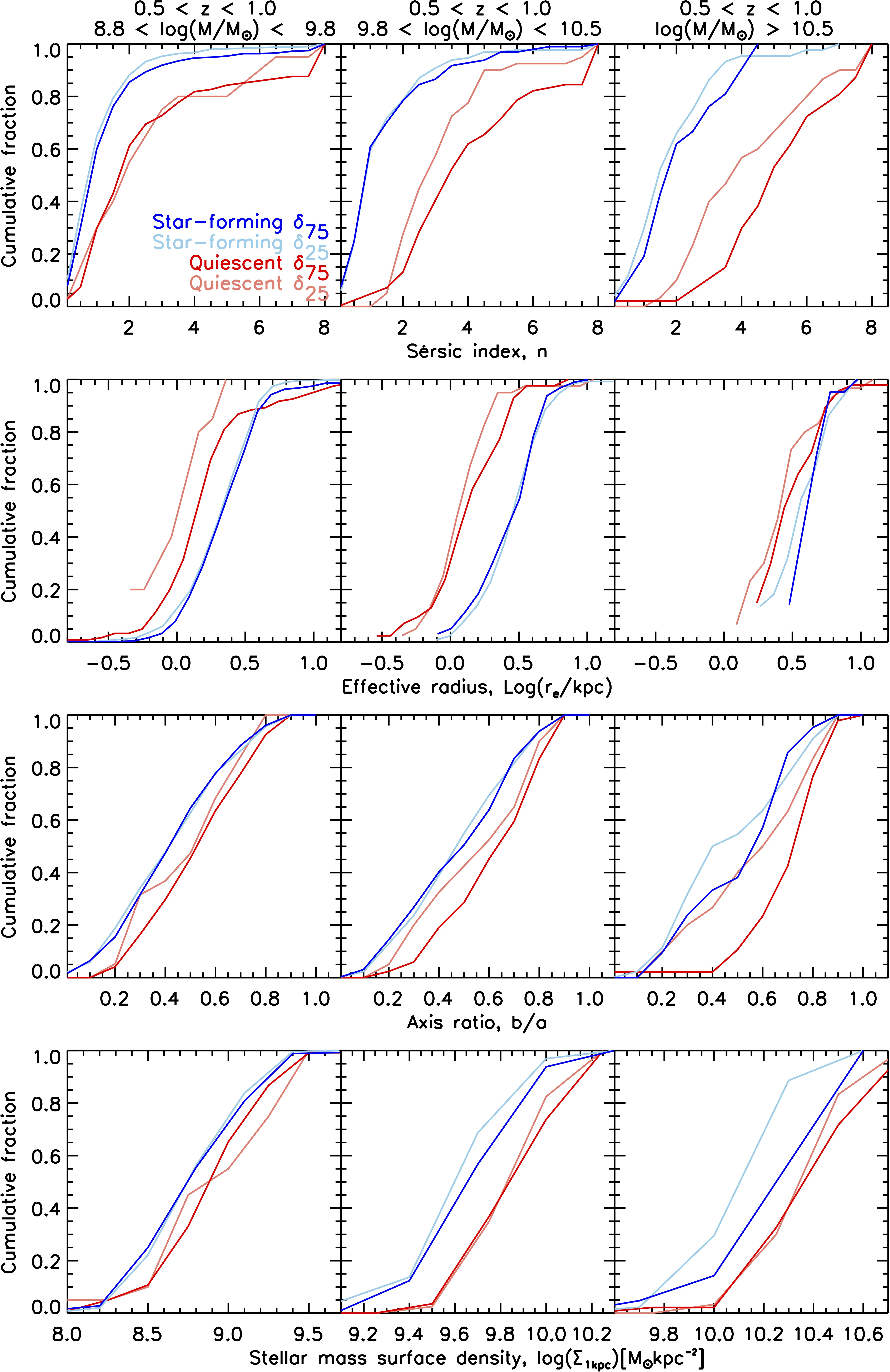
Figure. The cumulative distribution of Sérsic index (top row), effective radius (second row), axis ratio (third row), and stellar mass surface density in inner 1 kpc (bottom row) for quiescent galaxies in the lowest-density quartile (δ25; light-red), quiescent galaxies in the highest-density quartile (δ75; red), star-forming galaxies at 0.5 < z < 1.0 in the lowest-density quartile (δ25; light blue), and star-forming galaxies in the highest-density quartile (δ75; blue) in three stellar mass ranges. No significant evidence for a difference in distributions of any of the four morphological parameters between quiescent (and star-forming) galaxies in low- and high-density environment, except for the effective radius distributions of low-mass quiescent galaxies and Sérsic index distributions of high-mass quiescent galaxies but only at 2σ level significance.
